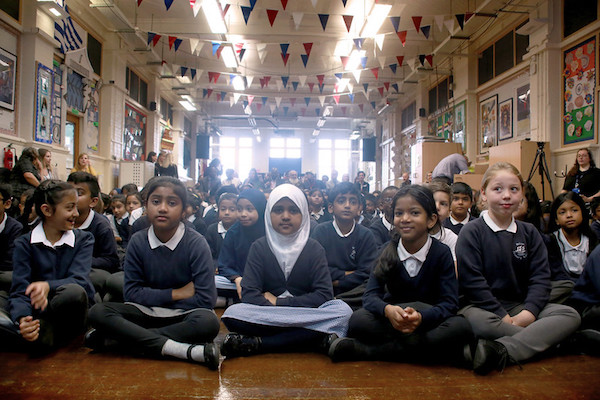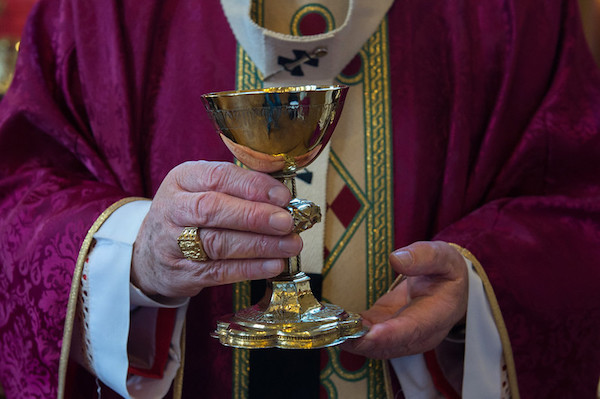Parishes in England and Wales may resume communion under both kinds at the Mass of the Lord’s Supper on Maundy Thursday, 6 April, following an agreement by the bishops.
Individual dioceses will announce their own policies, largely giving parish priests discretion according to their congregations’ circumstances.
The archdioceses of Westminster and Liverpool were among the first to confirm that they would resume communion under both kinds, or species, on Maundy Thursday – when the Church celebrates the institution of the priesthood and the Eucharist.
In a letter to priests of the Archdiocese of Westminster, Auxiliary Bishop John Sherrington said that this theological significance made it a suitable time to reintroduce the chalice alongside the host.
“The period leading up to Holy Thursday presents an opportunity for appropriate catechesis of the faithful regarding the significance of the reception of Holy Communion under either or both species,” he said.
“Important teaching, such as the totality of the Body, Blood, Soul and Divinity of the Lord received in either or both species, the personal disposition of those receiving Holy Communion and the reverence offered to the Blessed Sacrament should be included.”
The Diocese of Nottingham has circulated a leaflet to assist parishes with eucharistic teaching “to prepare us to receive the Precious Blood from the chalice once again”.
In the Archdiocese of Birmingham, Archbishop Bernard Longley confirmed that priests would be permitted to offer communion under both kinds from Maundy Thursday, but could postpone its reinstatement to another suitable date such as Corpus Christi.
Priests have not been permitted to offer the chalice to the congregation since Masses resumed in person in 2021, and the restriction remained in place even after the final lifting of Covid regulations in January 2022.
It is rare for dioceses to leave such decisions to parish priests.
Fr Joe Ryan, parish priest of St John Vianney in West Green, North London, expressed concern to ICN: “There are few occasions where we are free to decide on matters in individual cases – it is going to cause confusion in parishes if there is not some agreed arrangement.”
He added: “The Sign of Peace also needs to be considered.” Although parishes were permitted to resume the Sign of Peace last January, it was not specified what form it should take.
Only a celebrating priest is obliged to receive communion under both kinds at Mass. By the doctrine of concomitance, the body and blood of Christ are fully present in both elements of the Eucharist so full communion is to be had in either.
However, the Church teaches that the Eucharist “has a fuller sign when it takes place under both kinds, for in this form the sign of the eucharistic banquet is more clearly evident and clearer expression is given to the divine will by which the new and eternal covenant is ratified in the Blood of the Lord”.
Communion under both kinds was common throughout the Church until the twelfth century, but fell out of practice in the western Church during the Middle Ages.
It became a serious controversy during the Reformation, with Protestant churches insisting on communion under both kinds while the Council of Trent defended existing Catholic practice according to the doctrine of concomitance. The chalice remained restricted to the celebrating priest until the 1960s.
The Second Vatican Council’s Constitution of the Sacred Liturgy, Sacrosanctum Concilium, introduced a new rite for the congregation to receive the chalice on certain occasions from 16 April 1965, Maundy Thursday. This became general practice at most Masses over subsequent decades.
Eastern Churches, both Catholic and Orthodox, always give communion under both kinds, by offering the host on a spoon after it has been dipped in the wine.
Canon Robert Gibbons, chaplain to the Eastern Rite Melkite Church in the UK, told ICN: “Our Eastern Churches have never given communion under one form, even through the Covid period, so we rejoice to be fully participating in this great sacrament.”



 Loading ...
Loading ...